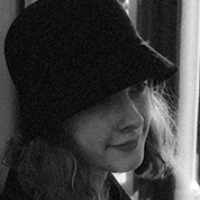5 Disney Films That Changed The Landscape Of Animation Altogether With Their Innovation
With a library of over one hundred feature-length films, it can be difficult to assign the label of which Disney films were the most important. Is it the grand hit, Frozen, with its massive marketing appeal? Perhaps it was Tangled, with its step into what is the modern Disney CGI animation format. It could be something older, like Cinderella, for setting the framework of what many people define as The Disney Formula.
None of these are correct.
Some of the most important Disney films may surprise you. With others, it will be quite obvious.
Here are the five Disney films that changed the landscape of animation altogether with their innovation and overall presence.
1. Snow White and the Seven Dwarves
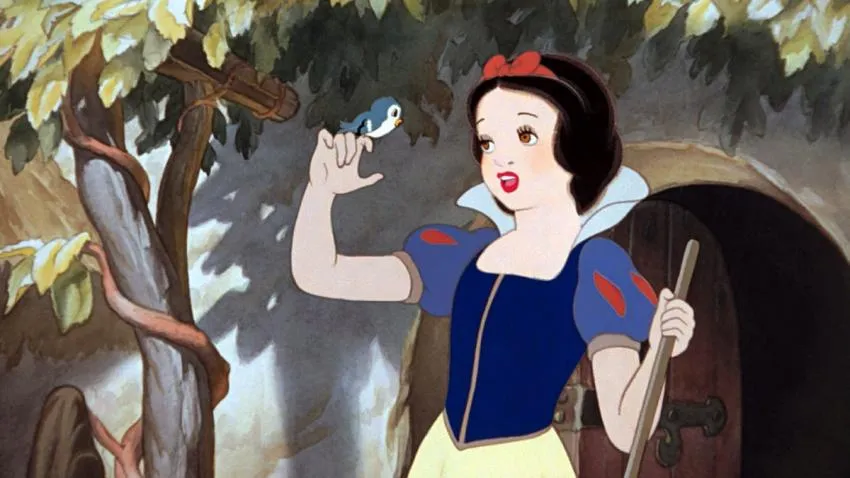
Perhaps the most obvious one is the 1937 feature film, Snow White and the Seven Dwarves. Nowadays, this film likely does not seem all that impressive, with a bit of a dry narrative and one-dimensional characters. Nonetheless, it takes the very prestigious title of the first full-length animated motion picture to debut in theaters. Again, this may not sound impressive by today's standards, but back in 1937, the collective hours of work and money it took to produce a full-length animated film made it unheard of.
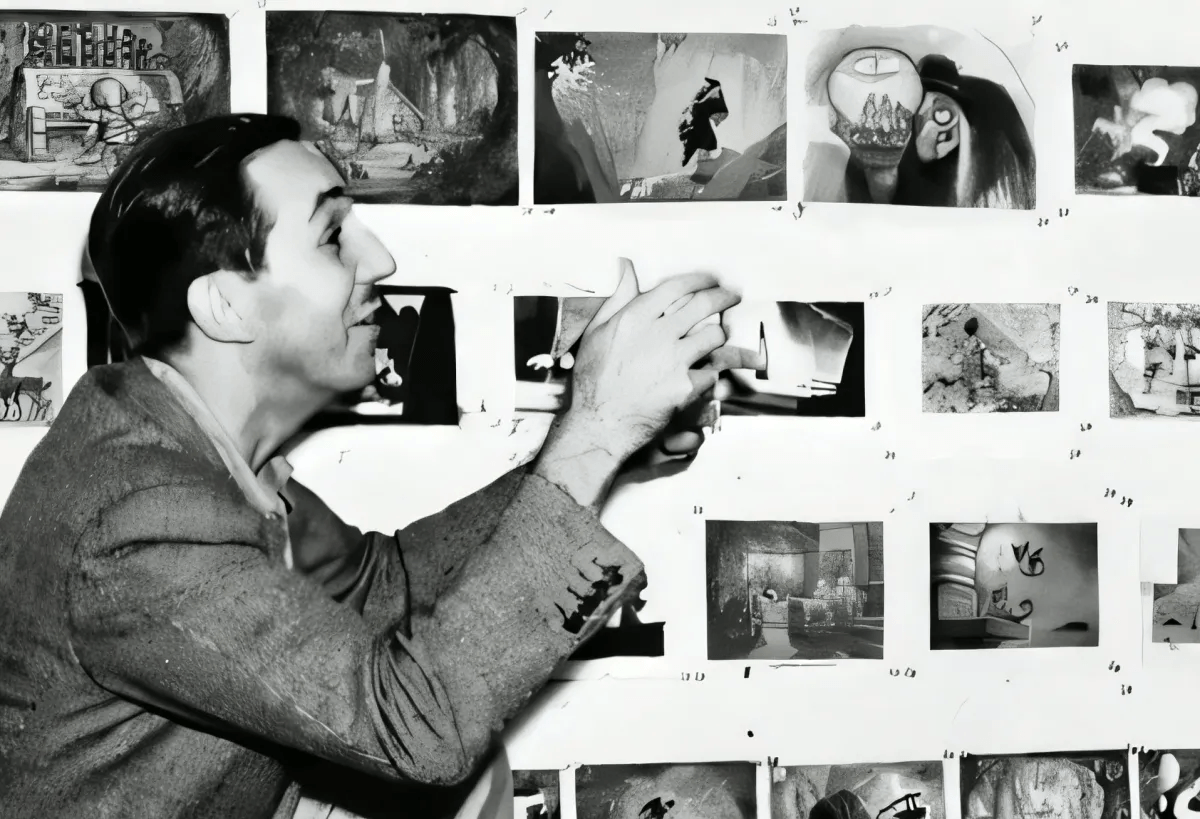
The idea of a full-length animated film was in fact so unheard of that the sheer amount of effort and money it took to produce Snow White and the Seven Dwarves nearly bankrupt Walt Disney. He had to take out a loan during the production, which thankfully was compensated by the eight million dollar box office of the film. Adjusted for inflation, that is about 146 million dollars today.
This risk changed the landscape of animation forever--what had previously just been shorts in theaters was now showing itself as a beast of greater power.
2. Sleeping Beauty
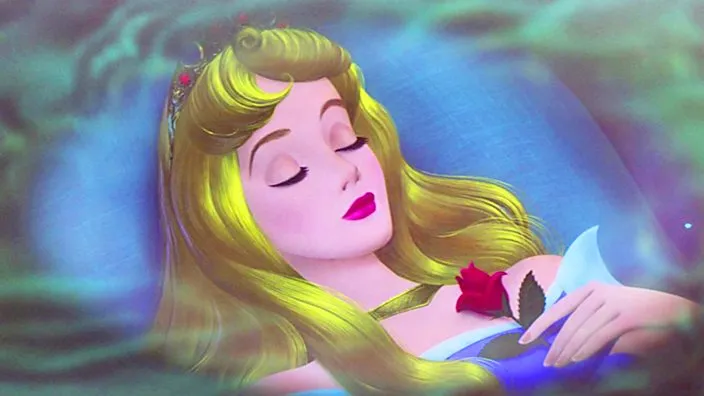
Like its predecessor, Sleeping Beauty falls into the category of what is typically seen as the 'Disney formula' of damsel princesses being saved by courageous knights. Unlike its predecessor, however, Sleeping Beauty introduced something new: the idea of sweeping, grand visuals with a thematic style.
While the idea of something as simple as stylization seems every day to most modern cartoons, many animated projects of the era had a similar visual appeal of being either excessively cartoony (such as the Mickey Mouse shorts) or rooted in a more realistic look (such as Snow White, which had realistic watercolor backgrounds and utilized a live model to base the movements of the character on). Sleeping Beauty met somewhere in between by adopting a visual style that drew inspiration in classic medieval wall tapestries.
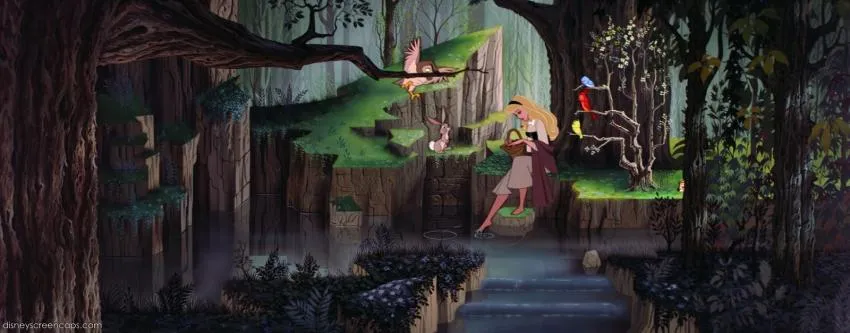
It is always a bold decision to leap away from the typical when it comes to what your market expects from you, but it can often result in greatness. The visual splendor of Sleeping Beauty is difficult to match and was the breeding ground for individual stylization in animated films.
3. Lady and the Tramp
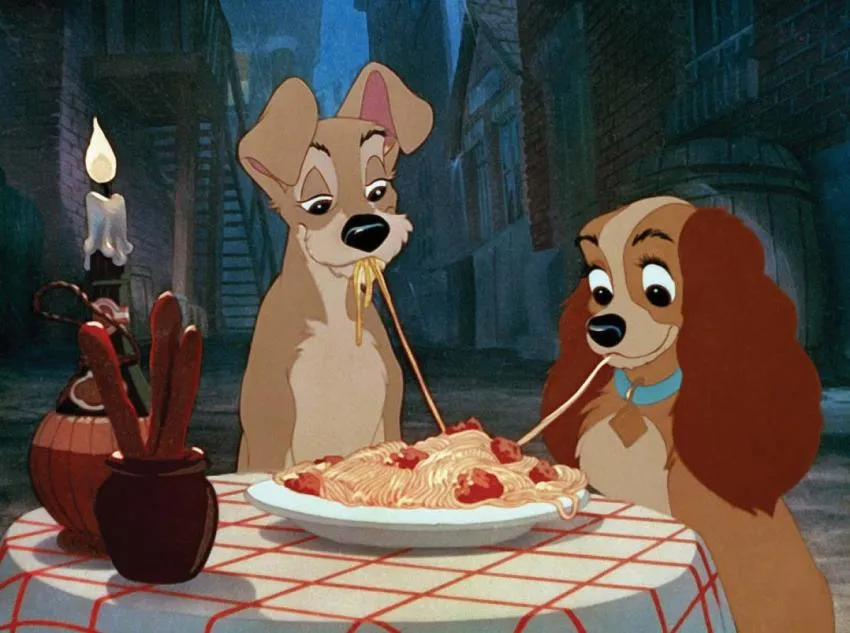
At first glance, it can seem like Lady and the Tramp does not have anything unique it offers to the animation world but the first glance could not be more wrong. Rather, Lady and the Tramp was the first full-length animated feature film to be shot in Cinemascope. While the term may be outdated to a modern moviegoing audience, this essentially means that the classic tale of two dogs was the very first animated movie to be shot in widescreen.
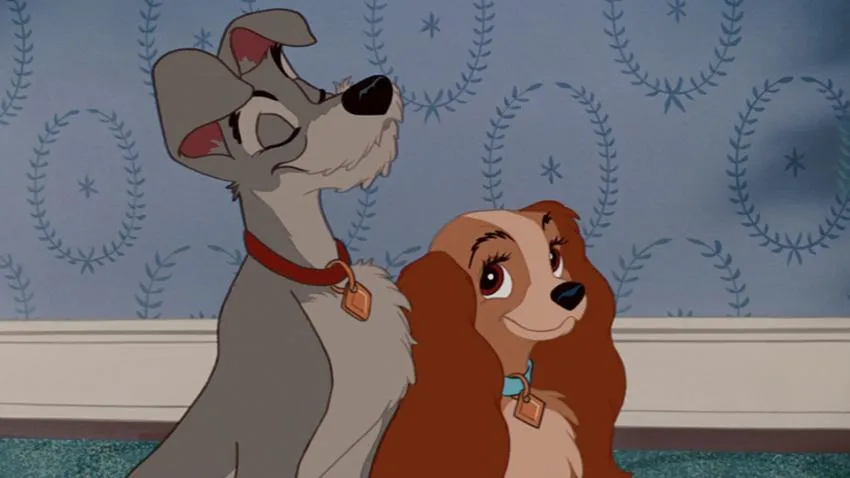
The choice presented some daunting technical challenges for the animation team. Animators and artists used to drawing scenes in a smaller space had to contend with not only the larger background space provided by the newer format, while also having to consider that the Cinemascope format was not yet widespread. Two cuts of the film ended up being released, the Cinemascope version and a recut version intended for the vast majority of theaters in the era that was not compatible with the widescreen experience.
Lady and the Tramp was released in 1955 only a few years after the first documented widescreen film, The Robe (1953), showing Disney's determination to keep up with what the craft of film had to offer.
4. One Hundred and One Dalmatians
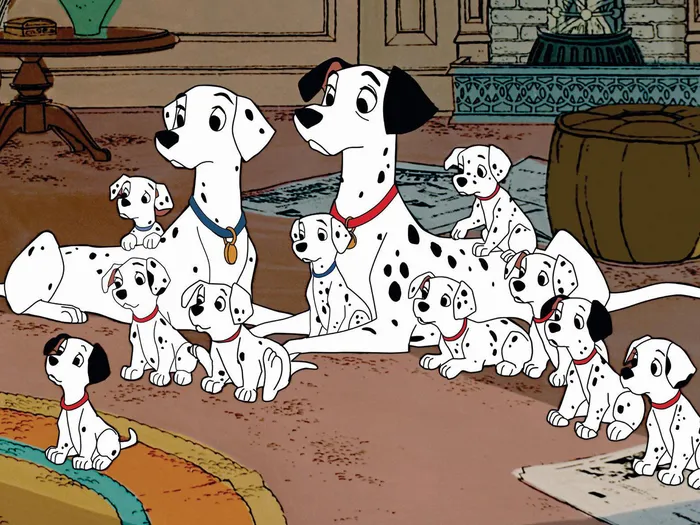
In 1961, Disney met itself with a surprising challenge in adapting the 1956 novel of the same name: One Hundred and One Dalmatians. The hurdle itself was, funny enough, the titular characters themselves. Well, not the dogs themselves, as much as the "one hundred and one" part. To anyone unfamiliar with the tedious process of animation, the idea of animating that many moving figures in multiple scenes are unappealing at best and impossible at worst. Disney, however, found a solution: xerography.
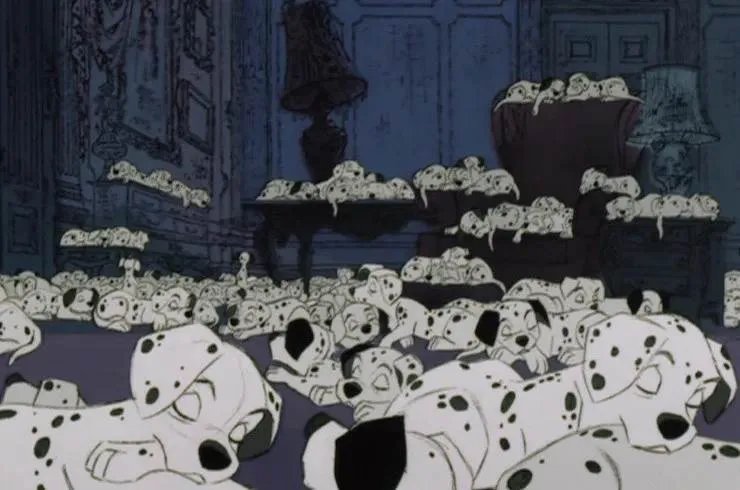
Using a modified Xerox camera, the department in charge of the film transferred xeroxed run-cycles and movement cycles of the dogs to animation cels. This gave them the ability to reuse a pre-existing run or walk cycle for a group of characters that looked nearly identical already, without having to hire a massive staff to compensate for over one hundred individual characters.
Naturally, the yet refined style caused something of a looser look to the film itself, with some shots of the dogs still having structure lines draw on their face such as pictured above on the left dog. This was remedied by designing the rest of the film to have a more loose look to fit with the look of the Xerography animation.
These methods would continue to be used in traditionally animated Disney films for decades to come.
5. Beauty and the Beast
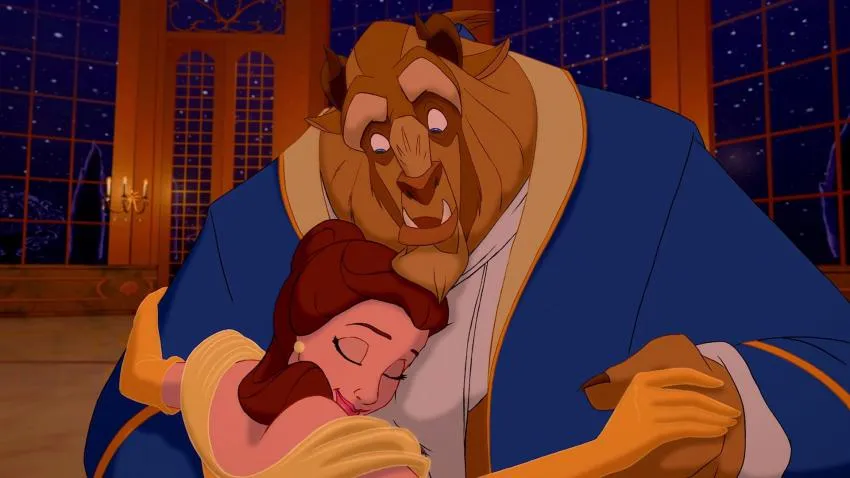
Beauty and the Beast is something of a unique inclusion on this list, as while it is technically sound and beautiful to look at, this 1991 did not introduce new techniques to the animation world. Rather, instead of positioning itself as a technical advancement to the animation world, it ended up presenting itself as a cultural advancement to not only the world of animation but to the film industry as a whole.
After over fifty years of animation achievements, Beauty and the Beast did the unthinkable and shocked the film industry by being the first animated film to be nominated for the Best Picture category at the Oscars.
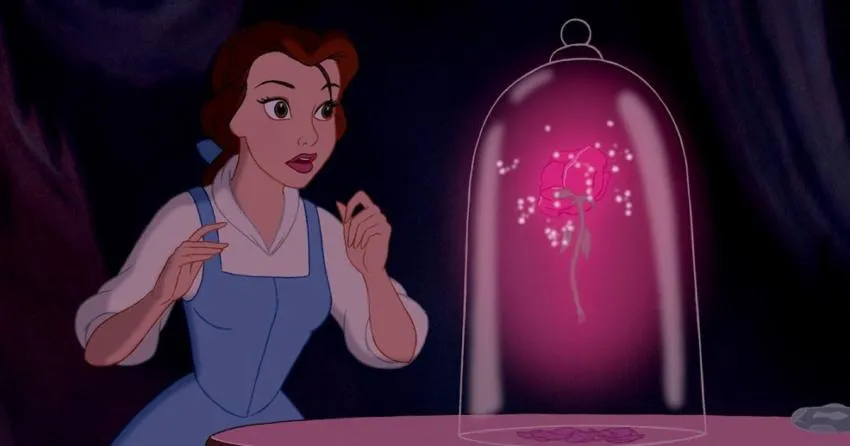
This had never happened before. While the film did not go on to win the award it was nominated for, losing gracefully to Silence of the Lambs, it did win both the Best Music and Best Original Song Oscars. More importantly, it made the industry reconsider animation. If Beauty and the Beast could be nominated, then it was well possible that there was more animation had to offer.
With this, Beauty and the Beast became the original reason for the incorporation of the Oscars categories for Best Animated Film and Best Animated Short.
Disney, whether you are a fan of it or not, has been a guiding force in terms of technological advances as well as a guiding force in terms of the cultural impact of animation on the world. Many of their techniques were cutting edge, made to stay always ahead of the creative curve, and the impact that the company had on swarthes of artists throughout generations is undeniable.
Love them or hate them, Disney will always be here. At the very least in the form of the impact, they have made on the industry.
Opinions and Perspectives
The creativity in solving these technical challenges is just as impressive as the artistic achievements.
What a journey from Snow White to Beauty and the Beast. Each step was so important.
These films weren't just entertaining, they were pushing boundaries in every way possible.
Really shows how innovation can come from both technical necessity and artistic vision.
Love learning about the technical side of these classics. Adds a whole new dimension to watching them.
Each of these films really earned their place in animation history. Such important milestones.
The problem-solving in these productions is really impressive. They found such creative solutions.
Snow White's success really proved that animation could be more than just short cartoons.
I use these examples in my animation classes. They're perfect for teaching both history and technique.
Makes you wonder what current animated films will be considered revolutionary in the future.
Amazing how these innovations happened when animation was still such a young medium.
Would love to see a documentary about how they overcame these technical challenges.
The courage to try new things really stands out in each of these films. Real game-changers.
These examples show why Disney dominated animation for so long. They were always innovating.
I love how each film represented a different type of innovation. Technical, artistic, and cultural progress.
Beauty and the Beast really proved that animation could tackle serious, mature themes.
It's amazing how many animation techniques we still use today came from these early innovations.
The xerography technique shows how creative solutions can become industry standards.
I'm an artist and still find inspiration in these classics, especially Sleeping Beauty's unique style.
Each of these films really pushed boundaries in different ways. Technical, artistic, and cultural.
Hard to believe Snow White was such a financial risk. Now Disney animation is practically a guaranteed success.
Lady and the Tramp in widescreen must have been mind-blowing for audiences back then.
The Sleeping Beauty art style was definitely ahead of its time. No wonder it took a while to be appreciated.
These innovations weren't just technical achievements, they changed how we tell stories through animation.
Watching these films chronologically really shows the evolution of animation technique.
I appreciate how the article explains technical aspects in an accessible way. Really helps understand their significance.
The xerography in 101 Dalmatians is a perfect example of necessity driving innovation.
Beauty and the Beast opened so many doors for animation. About time it got that recognition.
Can't imagine the pressure of making that first feature length animation. Walt really put everything on the line.
The medieval influence in Sleeping Beauty was such a bold choice. Really makes it stand out in Disney's catalogue.
It's fascinating how each film brought something new to the table. Not just artistically but technically too.
I'm studying animation and we still learn from these examples. They really set the foundation.
Never realized Lady and the Tramp was such a technical pioneer. Always just loved it for the story!
Looking at modern animation, you can still see the influence of these five films everywhere.
The artistic bravery of Sleeping Beauty deserves more recognition. They really went against the grain there.
Snow White's success really was a make-or-break moment for Disney, wasn't it? Talk about high stakes!
Amazing how many of these innovations came from necessity rather than just artistic choice.
That's such a good point about Beauty and the Beast not being technically innovative but culturally groundbreaking.
Honestly, I think Snow White deserves even more credit than it gets. It literally created a new industry.
I've worked with modern animation software and still can't imagine animating 101 dogs without computer help.
Wonder what challenges they'd face making Snow White today. Probably very different ones!
The article makes me appreciate these classics even more. There's so much history in each frame.
These innovations really show why Disney became such a powerhouse in animation. They were always pushing forward.
Love how Sleeping Beauty dared to be different visually. That medieval style still looks unique today.
Beauty and the Beast's nomination changed everything. Finally showed that animation could compete with live action films.
The risk-taking spirit of early Disney is really inspiring. They weren't afraid to try new things.
My grandmother saw Snow White in theaters when it came out. She said people couldn't believe their eyes.
I had no idea about the two different versions of Lady and the Tramp. Must have been like making the movie twice!
When you think about it, Snow White walked so Beauty and the Beast could run. The evolution is fascinating.
The xerography technique was genius! Talk about thinking outside the box to solve a seemingly impossible problem.
Those structure lines in 101 Dalmatians actually give it a unique charm. Sometimes technical limitations create interesting artistic effects.
Each of these films really represents a huge leap forward. Makes me wonder what the next big innovation will be.
Just rewatched Snow White recently and while it may seem simple now, the fluid animation is still impressive.
I'm curious about the live model they used for Snow White. That must have been quite innovative for the time too.
The cultural impact of Beauty and the Beast can't be overstated. It really legitimized animation as a serious art form.
We take widescreen animation for granted now, but Lady and the Tramp really blazed that trail.
Reading about these innovations makes me appreciate these films even more. There's so much history behind each one.
The risk Walt took with Snow White really shows his dedication to pushing boundaries. That kind of bold move could have ended everything.
I find it interesting that Beauty and the Beast opened the door for animated films at the Oscars, yet very few have been nominated for Best Picture since.
My art professor actually used Sleeping Beauty as an example of medieval art influence in modern media. The style really is unique.
What impresses me most is how these innovations came from creative problem-solving rather than just throwing money at issues.
Love how Lady and the Tramp pushed technical boundaries with widescreen. Must have been quite a challenge back then.
I wonder what Walt Disney would think of today's computer animation. Would he embrace it or prefer traditional methods?
The amount of detail in Sleeping Beauty's backgrounds is insane. Modern CGI is great but there's something special about that hand-drawn style.
You're absolutely right about that. Animation shouldn't be seen as just for kids.
Beauty and the Beast deserved that Best Picture nomination. Animation can tell stories just as powerful as live action films.
I work in animation and we still reference these innovations today. Disney really set the foundation for so many techniques we use.
The xerography technique saved so much time and money. Smart thinking by Disney's team there.
Anyone else find it wild that Snow White made $8 million in 1937? That was an enormous sum for the time.
Fair point about the commercial failure, but its influence on animation style is undeniable. Sometimes art needs time to be appreciated.
Sleeping Beauty was a commercial failure when it came out though. People weren't ready for such artistic innovation.
I remember watching 101 Dalmatians as a kid and never noticing those structure lines they mentioned. Going to rewatch it now with new eyes!
Interesting how technical innovation drove so much of Disney's early success. Now it seems more about storytelling and marketing.
The article doesn't mention it, but Beauty and the Beast also pioneered computer animation with that ballroom scene. That was pretty innovative too.
I'd argue that Snow White's success paved the way for every animated feature film we enjoy today. Without it, who knows if animation would have evolved beyond short films.
The widescreen challenge with Lady and the Tramp must have been such a headache for the animators. Imagine having to create two different versions!
True about Fantasia! But I can see why these five made the cut. Each one brought something completely new to the table.
I'm surprised Fantasia isn't on this list. The sound and animation integration was revolutionary for its time.
Does anyone else think it's fascinating how they solved the 101 Dalmatians problem with xerography? Such a clever technical solution for its time.
Actually, while Snow White was groundbreaking, I think Beauty and the Beast's Oscar nomination was even more significant for animation as an art form.
The part about Sleeping Beauty's medieval tapestry inspiration really caught my eye. Looking at it now, I can totally see that influence in the art style.
I never knew Snow White almost bankrupted Disney! It's incredible to think how much of a gamble that first feature film was.
